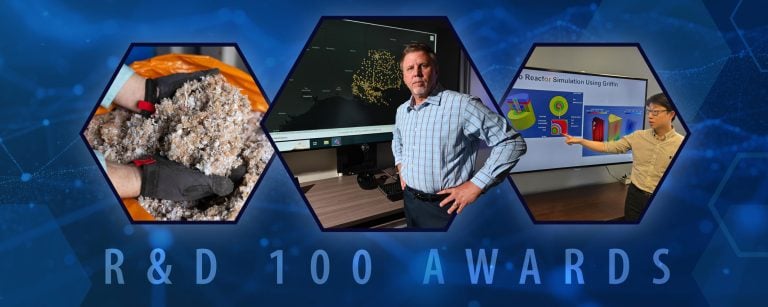INL and NREL Demonstrate Power Grid Simulation at a Distance
Capability makes national laboratory assets accessible to grid researchers worldwide
The Energy Department’s National Renewable Energy Laboratory (NREL) and Idaho National Laboratory (INL) have successfully demonstrated the capability to connect grid simulations at their two labs for real time interaction via the Internet. This new inter-lab capability enables the modeling of power grids in greater detail by allowing software and equipment anywhere in the world to establish a real-time connection to the unique facilities and capabilities available within the DOE national laboratory complex.
The two national laboratories were able to connect their “Real-Time Digital Simulators” (RTDS) and achieved grid simulation so hardware or software in one lab can directly interact with the hardware or software at the other lab. While connected, the local power grids handle any actual power flows into and out of the hardware. INL has multiple RTDS racks that can be interfaced to NREL’s grid simulator, allowing the simultaneous simulation of complex power systems with many electrical buses and multiple distribution feeders.
“This successful collaboration between INL and NREL demonstrates how today we are creating the laboratory of the future by connecting key capabilities across the country to address pressing energy challenges,” said Steven Aumeier, INL’s Associate Laboratory Director for Energy and Environment.
“This new capability allows NREL and INL to interconnect a wide variety of equipment and software simulations to support grid modernization objectives,” said NREL’s Associate Director for Energy Systems Integration Bryan Hannegan. “Such interconnections combine and leverage the strengths of the national laboratories to greatly broaden the impact of our work in the nation’s interest.”
Connecting two grid simulation models at a distance requires rapid, reliable communication with little delay time. For this demonstration, the connection successfully exchanged data that was sampled 1,200 times each second, with an average delay time of only 28 milliseconds. Grid simulations are particularly useful for testing a grid’s transient responses—the immediate response to a sudden change, such as the loss of a power generator or a sudden increase or decrease in demand.
Future experiments will match the utility-scale transmission system at INL to a simulated distribution line at NREL, which will be connected to an electrolyzer that produces hydrogen from electricity. If the electrolyzer is turned down to consume less electricity, that change in operation will be reflected in the distribution line simulation, which will relay its response to the INL system. Then, the INL transmission line also will respond appropriately to that change. To make the power flows work out, the local Colorado grid will provide power for the electrolyzer, while the local Idaho grid will absorb the power produced by INL’s transmission system.
This successful RTDS test shows that facilities in many locations can interconnect with this system for advanced demonstrations. This network of RTDS’s can form a virtual laboratory that allows multiple laboratories to cooperate on energy integration, particularly for grid simulations.
NREL’s Energy Systems Integration Facility (ESIF) has the capability to merge computer-based simulations of the power grid with actual energy systems hardware such as wind turbines, solar panels, batteries, and electric vehicles—a capability called “power hardware in the loop.” Meanwhile, INL operates the National Electric Grid Reliability Test Bed, which features a utility-scale transmission system and distribution systems that can be customized for multiple power grid configurations. Transmission systems are the tall, high-voltage towers that carry large amounts of power across the countryside, and distribution systems are the relatively low-voltage systems that deliver the power to our homes and businesses.
The NREL-INL virtual connection was funded by the Integrated Network Testbed for Energy Grid Research and Technology Experimentation (INTEGRATE) project, which is sponsored by the Energy Department’s Office of Energy Efficiency and Renewable Energy and managed by NREL. INTEGRATE is a cost-shared project with industry, universities, and other stakeholders that will award up to $6.5 million in federal funds to technical teams throughout the country that are working to address the challenge of high penetrations of renewable energy on the nation’s power grid.





